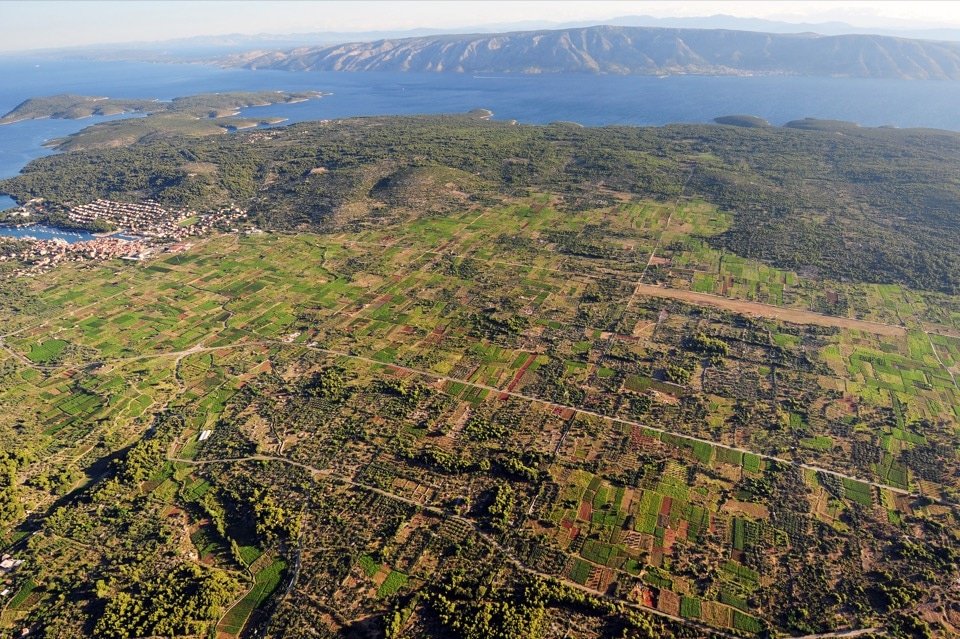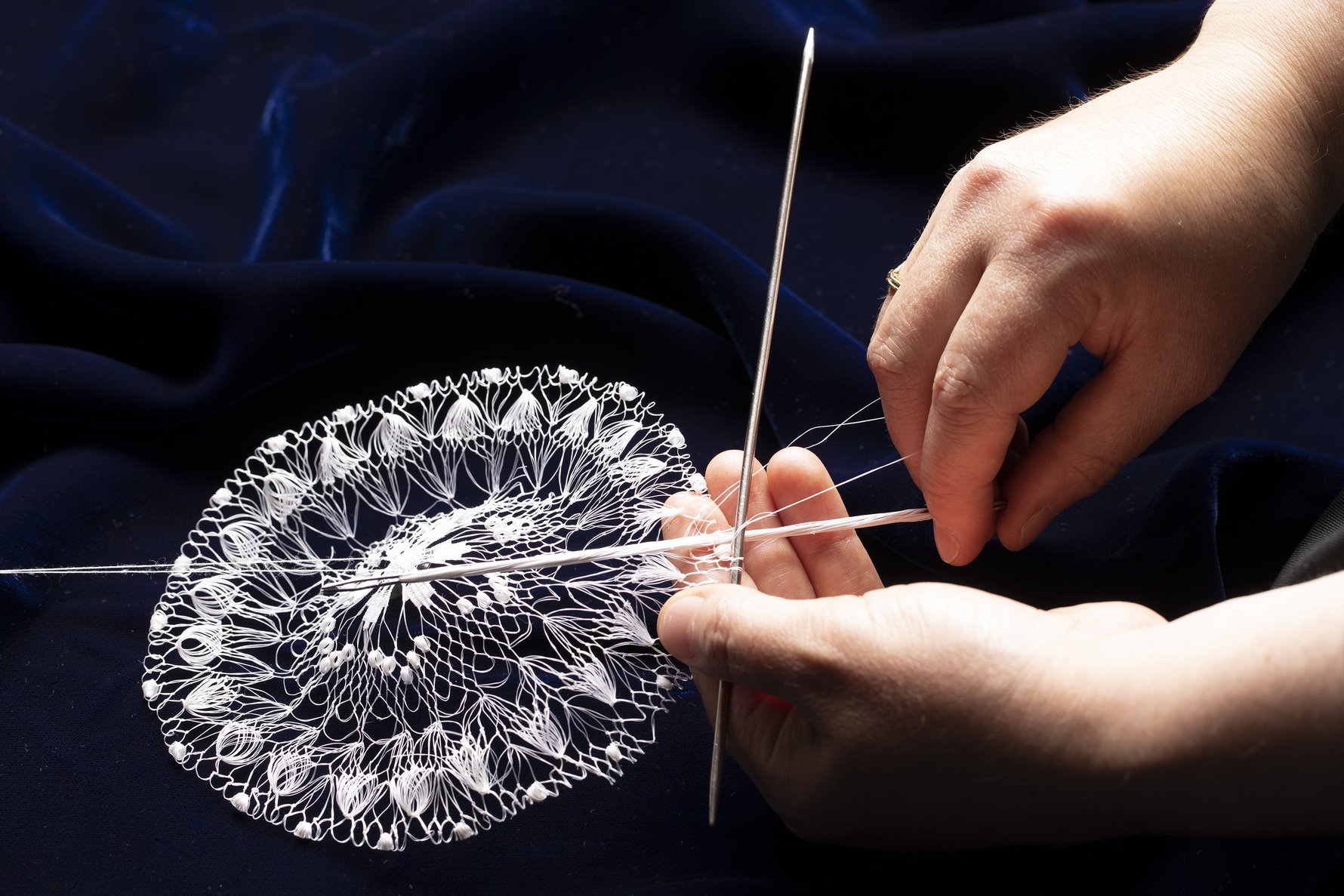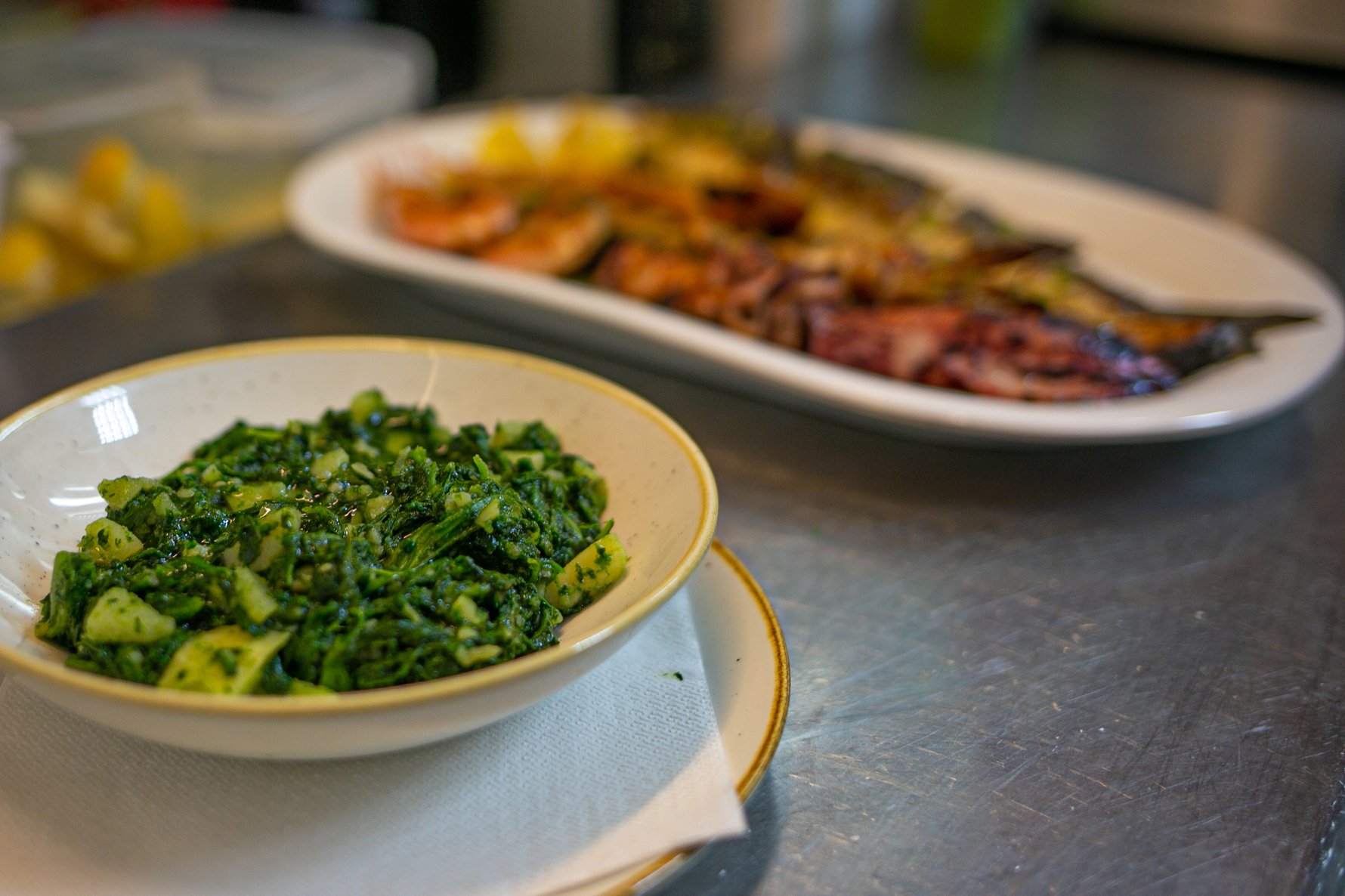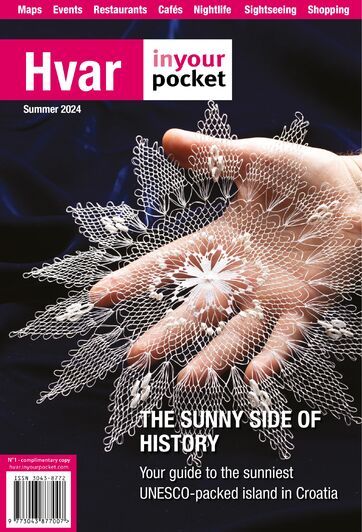Most specific of the practices included on Unesco’s intan- gible culture list is the Za križen (Following the Cross) processions that have taken place on Hvar over Easter time for the last 500 years.
Hvar's UNESCO Listings
1.The Stari Grad Plain
To the untrained eye, the expanse of fields east of Stari Grad might not turn heads. However, look closer, and you’ll discover one of Hvar’s greatest innovations, an agricultural triumph that remains as fertile today as it was when established by the Ancient Greeks in the 4th century BC and is pretty much divided along similar lines. Widely regarded as one of the country's most important archaeological spots, the Stari Grad Plain covers around 75 plots, with olives and grapes the dominant crops. There is a tender slowness to life in these neatly divided plots, another reminder that life is to be savoured, not suffered.
Where to see? Step into the past with a unique VR experience located on the ground floor of the Agency for the Management of the Stari Grad Plain (Vukovarska cesta 2, tel. +385 99 3849 397). Available by appointment or during opening hours from 10:00 to 13:00 and 17:00 to 20:00. Discover a virtual reconstruction of the ancient site of Faros and the southeastern corner of the Plain, showcasing how this historic landscape once looked.

2.'Za križen' – Following the Cross
On Hvar, tradition means more than simply paying homage to years gone by. The traditions of the towns and villages here are an integral part of daily life even today, and nothing shows this better than the annual Za Križen procession. A rightful inclusion on the UNESCO Intangible Cultural Heritage List, the “Following the Cross” people’s procession is actually six processions, with crossbearers starting out simultaneously at 10 pm from Jelsa, Pitve, Vrisnik, Svirče, Vrbanj and Vrboska. These important figures spread peace and love across the island, covering 24km in a clockwise direction, stopping at churches and chapels before completing the heart-shaped circuit at around 7 am the following day. There is symbolism at every step, not least in the form of the crossbearer, bringing to mind the suffering of Jesus in his final mortal moments. The crossbearer is accompanied throughout the journey, and it feels like the entire island comes out to participate in this most traditional of events.
Where to see? The Za Križen procession is one of the most profound and unique cultural traditions on the island of Hvar—deeply rooted in faith, community, and centuries of history. For first-time visitors, it can feel overwhelming without context. Opening in June 2025 in Jelsa, a new Interpretation Centre 'Za Križen' will serve as a dedicated space to explore and understand this iconic night pilgrimage. Through engaging exhibit and rich storytelling, visitors will discover how Za Križen began, trace its sacred route, and learn about its meaning today and in the future. It’s more than a museum—it’s a place of connection, insight, and cultural experience.

3.Hvar Lacemaking
Made only by the Benedictine nuns in Hvar, agave lace is one of the island’s most unique symbols. The production of agave lace is believed to have begun in the 19th century, and the lengthy process involves intricate skills that produce gorgeous results. You’ll see examples of lacemaking heritage all across the island.
Where to see? Visitors are welcome to stop by and observe their work. For more information or to arrange a visit, contact them at: benediktinke.hvar@gmail.com.

4.The Mediterranean Diet
There is a reason almost every doctor recommends following a Mediterranean diet, and the results are visible all across Hvar. The nucleus of the idea is to stay true to nature and its whims, meaning seasonal products, excellent olive oils, and a steadfast commitment to freshness throughout.
Where to see? The Mediterranean Diet is not just about food – it’s a way of living. It reflects a lifestyle rooted in shared meals, seasonal ingredients, local traditions, and strong community ties. To learn more about its cultural significance, visit: mediterraneandietunesco.org.

5.Dry Stone Walling
It might sound simple, but there is an intricacy to Hvar’s famous dry stone walling that is genuinely spellbinding. This is construction at an elite level, wall-building without mortar that is the product of understanding, tradition, and an inherent knowledge of the rhythm of the land.
Where to see? Take a walk through the Dry-Stone Wall Park in Velo Grablje, Hvar, and discover beautiful examples of traditional stone craftsmanship. To learn more about this unique heritage, simply scan the QR code:

6.Klapa Multipart Singing
Added to UNESCO’s intangible cultural heritage collection in 2012, klapa singing is choral harmony with an undeniable Dalmatian flair. There is a physical element to this tradition that allows the singing to shine brighter, and any opportunity to see it in action is one to be grabbed with both hands.Where to see? You can experience traditional Klapa singing for free once a week in the town of Hvar at Veli Đardin. For exact dates, visit visithvar.hr.
On July 12 at 21:00, don’t miss the 8th Klapa Festival “Jelsa od Versa” in Jelsa’s main square—an evening of a cappella music inspired by Hvar’s stories and traditions.




Comments